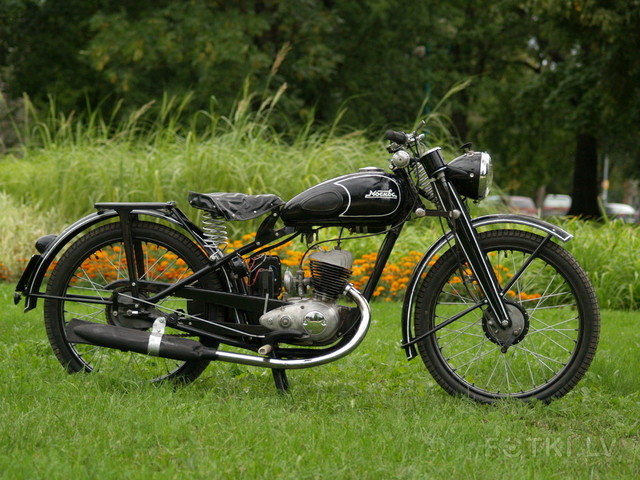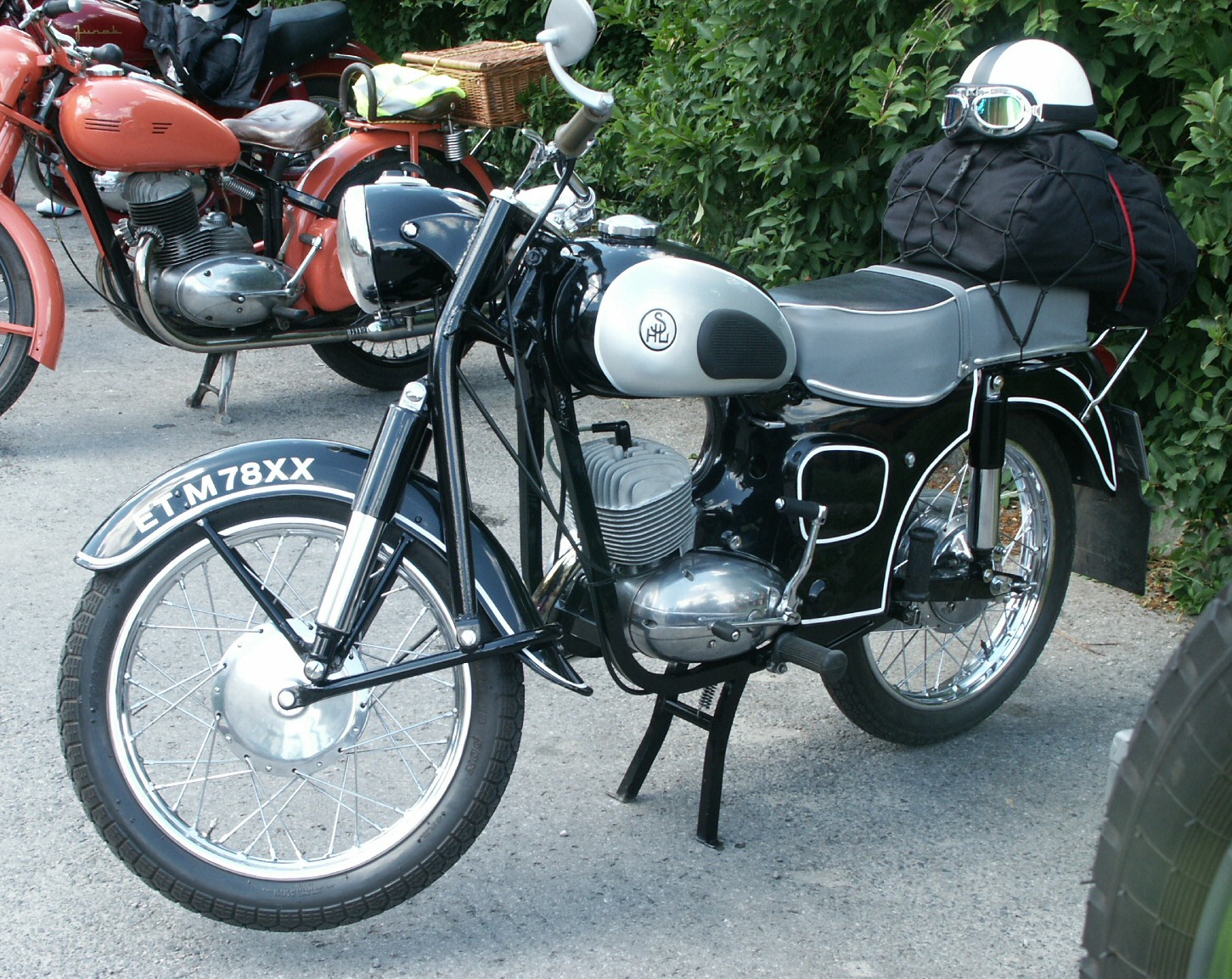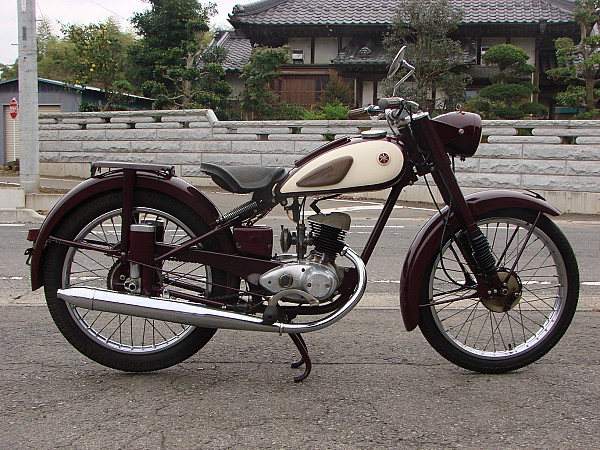BSA Bantam History- It's Origins.

note: I claim no copyright on large swathes of this text. I have merely colated these articles and images from many sources from the internet. Please, if I have breached any copyright use the contact form, and I shall immediately remove the text. i am not looking to profit, merely make my page factually correct.
Despite the Bantam being considered the archetypal 'truly British' lightweight motorcycle outselling all others, it was in fact based on a German design. The Bantam was based on the DKW RT 125
The list of motorcycles inspired by the DKW RT 125 goes on and on. If you’re interested in discovering more DKW lookalikes, In addition to those I've written about, I recommend checking out further bikes influenced by the DKW.
- Czech 1949 Jawa 125
- 1955 Kawasaki (Meihatsu) 125
- Italian 1950 MiVal 125T
- German 1941 NSU 125 ZBD
- Hungarian Csepel 125
DKW RT 125
If there is one motorcycle that could be considered the archetype of lightweight bikes, it would have to be the DKW RT 125. Even if you’ve never seen one before, you’ve most likely seen traces of its iconic design in other bikes. Since its inception in the 1930s, the DKW RT 125 has gone on to be one of the most copied motorcycles of all times and there are some very specific reasons for this we’ll discuss below.
Origins of the DKW RT 125
The name “DKW” comes from a two-stroke engine built in 1919 by the Danish engineer Jørgen Skafte Rasmussen, in Saxony, Gemrany. It was this small engine, which Rasmussen called Das Kliene Wunder (the little marvel) that gave DWK its start in the motorcycle industry.
By the 1930s, DKW was the largest manufacture of motorcycles in the world. The RT 125, designed for DKW by Hermann Weber, came along in 1939. It was considered a masterpiece of design and functionality based on its streamlined looks and efficient engine.
The engine featured flat-topped pistons rather than deflector pistons made possible by DKW’s pioneering development of the Schnurle two-stroke scavenging process. This efficient means of collecting the air-fuel mixture was further aided by DKW’s unique arrangement of transfer ports.
Immediately after the release of this motorcycle, DWK’s competitors, such as Adler and TWN, switched to flat-topped pistons and attempted to design similar transfer port arrangements. However, it was WWII that allowed the RT 125 to be widely copied throughout the world.
https://en.wikipedia.org/wiki/DKW_RT_125

A design that was received as war reparations, with the Bantam as a mirror image so the gearchange was on the right side as with other British motorcycles of the period. The same design went into production in at least two, and perhaps four, other countries.
Harley-Davidson Model 125 (Hummer)
https://en.wikipedia.org/wiki/Harley-Davidson_Hummer
one quite recently sold here: https://www.bonhams.com/auctions/21389/lot/252/
The Hummer was a motorcycle model manufactured by Harley-Davidson from 1955 to 1959. However, the name "Hummer" is now used generically to refer to all American-made single-cylinder two-stroke Harley-Davidson motorcycles manufactured from 1948 to 1966.[1] These motorcycles were based on the DKWRT125, the drawings for which were taken from Germany as war reparations after World War II.[2] The RT125 drawings were also given to the United Kingdom and the Soviet Union as war reparations, resulting in the BSA Bantam[3] and the MMZ M-1A Moskva, later known as the Minsk.[4]

in late 1947 (several months before BSA) and the occupiers of East Germany, the U.S.S.R. began building the
Москва (Moskva) M1A
https://en.wikipedia.org/wiki/Minsk
Minsk (Ru:Минск), also known as M1NSK, is a Belarusian brand of motorcycles, scooters, ATVs and snowmobiles, produced by the Minsk Motorcycle and Bicycle Plant (MMVZ). The first M1A motorcycle was released in 1951. Since 2007, the company is a private enterprise. More than 6.5 million Minsk motorcycles have been sold worldwide.
M1NSK built bicycles are branded as Aist.

model even earlier, c.1946. In East Germany the machine was made at the original DKW factory by IFA, which later became MZ and Japan also produced copies.
Poland SH M11
After the war the looted works were nationalized and it was decided to continue with motorcycle production. The first postwar model SHL 125 – M02 of 1947 was a mix of pre-war parts and frames and the German DKW RT 125 design, using a copy of the RT125 engine, produced by PZL Psie Pole in Wrocław. A small series of 203 motorcycles was manufactured in State Automobile Workshops Nr.2 in Warsaw (later WFM works) and was similar to Sokół 125 of the same works.[1]
The first model to be produced in Kielce again was improved SHL M03 of 1948, and then SHL M04 of 1949. In 1948 the name Huta Ludwików was changed to KZWM Polmo-SHL (Kieleckie Zakłady Wyrobów Metalowych - Kielce Metal Works). Luckily, the communist authorities decided to keep pre-war SHL brand, which was not a rule. In 1951 it was however decided to stop motorcycle production in Kielce and until 1954, the production of SHL M04 was continued in the WFM in Warsaw, followed by a short series of SHL M05 in 1955, with telescopic front suspension.[1] All these motorcycles were improvements of one design, related to the DKW RT 125, with 125 ccm engines. Some 18,500 motorcycles had been made in Kielce so far.[1] Then, the SHL brand disappeared for a short time, replaced by the WFM brand.
https://en.wikipedia.org/wiki/SHL

Yamaha Ya-1
In January 1955, Nippon Gakki's Hamana Factory in Hamakita was ready to begin production of the YA-1, and the first bikes were delivered to dealers in February.[8] This new motorcycle had been heavily influenced by the contemporary DKW model RT125, and like the DKW was driven by a 125 cc two-stroke, single cylinder engine, but the YA-1 designers paid particular attention to materials, assembly, and engineering upgrades, such as going from a three-speed to a four-speed transmission. With confidence in the new direction that Genichi Kawakami was taking, Nippon Gakki founded Yamaha Motor Co., Ltd. on July 1, 1955 and made Kawakami the new company's first president. Staffed by 275 employees, the new motorcycle manufacturer built about 200 units per month by the end of 1955.[4][6][9]
That same year, Yamaha entered its new YA-1 in the two biggest race events in Japan. They were the 3rd Mt. Fuji Ascent Race held in July 1955, and the 1st Asama Highlands Race in November. In these debut races, Yamaha won the 125 cc class.[10][11]
The following year, the YA-1 won again in both the Light and Ultra-light classes of the Asama Highlands Race. The YA-1 soon established a reputation as a high-quality and reliable machine, which Japanese enthusiasts affectionately nicknamed the Aka-tombo (赤トンボ?, "Red Dragonfly") for its slender shape and elegant chestnut red finish. Outstanding race performance had made the YA-1 much more desirable, in spite of its price of ¥138,000 in 1955 (for comparison, a male college graduate's starting salary was ¥10,780 on average).[2][9]
Thanks to the popularity of the YA-1, a YB-1 model with a 4 cc larger displacement (allowing the engine to run slower) was produced later in 1955.[12] A genuine successor to the YA-1, the 175 cc YC-1 was being produced by April 1956.[3]
https://en.wikipedia.org/wiki/Yamaha_YA-1

The BSA designers made the design a mirror image with right hand side controls and Imperial fixings for manufacture in Birmingham.
This original Bantam, the D1, was released in October 1948 and continued in production for several years. It had telescopic forks, a rigid rear end, direct electrics, shovel front-mudguard and fishtail silencer, was available only in "mist green" and sold for £60 plus tax. Although the frame changed out of recognition (beginning with conversion to plunger and then swinging fork rear suspension), the engine remained a recognizable development of the original for the entire 23 years of production.
The first Bantams were available only in all-over “mist green”, and sold for £60 plus tax. Later models changed distinctly from the original; over the years it gained improved suspension including a rear swinging arm, electrics and the engine size increased from 125 to 175 cc.
The engine is a unit construction (engine and gearbox of one piece) single cylinder 2 stroke. The barrel is cast iron while the head is alloy. The gearbox was initially three speeds, later versions went to four, fed through a “wet” clutch. Ignition was of two types a Lucas battery powered coil in earlier machines or a magneto by Wipac. The magneto was on a composite assembly sitting within the flywheel with its magnet inserts; windings gave power either directly to the lights (with a dry cell for when the engine was stopped) or through a rectifier into a lead acid battery. The early D1s had a flattened fish tail style exhaust. This was replaced with a more conventional round tube exhaust which ran at a higher level on trials and off-road models such as the “Bushman”
Bantam D1
Developed from the pre-war DKW RT125 and announced in 1948, the Bantam became a top seller for BSA, in excess of half a million leaving the Birmingham factory before production ceased in 1971. Originally of 123cc, the engine grew first to 148cc and then to 172cc. Plunger rear suspension became available as an option in 1950, as did battery electrics powered by a 6-volt Lucas alternator, direct lighting having been relied upon hitherto.
D14 Bantam
The introduction of the 172cc D10 model in 1966 marked a number of important technical developments for the ever-popular Bantam, the most important of which were a change to coil ignition, replacing the old flywheel generator, and the adoption of a 4-speed gearbox, while a raised compression ratio and bigger carburettor increased maximum power to 10bhp and the top speed to 62mph. Introduced for 1968, the successor D14 Bantam boasted a more powerful engine producing 12.6bhp. All three models – Supreme, Sports and Bushman – used the four-speed gearbox first seen on the preceding D10 while the latter pair boasted new, heavy-duty front forks.
D7 Bantam Super
Many a now-mature motorcyclist’s first 2-wheeled experience will have been gained aboard a BSA Bantam, a model that was produced in various forms for over 20 years. The introduction of the first 172cc model – the D5 – for 1958 marked a number of developments, the most important of which were a stronger big-end bearing and improved lubrication. A raised compression ratio and larger carburettor increased maximum power to 7.4bhp and the top speed to 59mph. Introduced for 1959, successor D7 model – known as the Bantam Super – featured the 172cc engine while boasting a new frame, hydraulically damped front fork, bigger brakes and up-swept handlebars.
Main variants listed, most models were also available in competition form or with extra refinements. Nominal engine sizes given. BSA used a lettering system for their range of motorcycles. BSA decided to use a different letting system for the Bantam as it was a two-stroke, but with the introduction of the B175/D175 the company saw it more appropriate to label it with the “B” lettering system as by that time the engine size had increased to the capacity of those in the “B” category.
And it’s appropriate that we’ve mentioned the Germans, because that’s where these Small Heath Dinky Toys were seeded.
We’re talking about WW2 reparations. We're talking about the famous Potsdam pow-wow. We're talking about a US$20 billion German apology to the allies for all the harm and distress caused by Hitler trying to undo the Treaty of Versailles. Because when the shooting stopped, the inevitable picking-over-the-spoils started. Which was why BSA, having helped the British government bomb the hell out of the Third Reich (and having profited handsomely from it), the company was now looking to line its pockets a little more and hoping to put some rainy day money in the piggy.
Not that there was necessarily anything wrong with such legalised looting. International armed conflict is an expensive business, and anyone with any experience of the Great War knew only too well that hard times were coming and that the Americans weren't giving us all those liberty ships and Sherman tanks for free simply because of a common linguistic heritage.
So BSA did what needed to be done and moseyed around the wrecked German factories searching for a little payback. The firm quickly recognised and appropriated a winning design in the shape of the German Dampf Kraft Wagon (DKW) RT125 (a design which was also recognised by the Russians, the American and the Japanese who, in due course, all built their own versions of the little Deek).
The BSA D1 125cc. engine unit began production in 1948 for export only. The design had been taken from the German firm DKW as part of the war reperations. The engine proved itself, and with small motorcycles becomming ever more popular in Britain, BSA decided to build a complete motorcycle around the D1 engine. In October 1948 the BSA Bantam was released, the bike had telescopic forks, a rigid rear end, direct electrics, shovel front-mudguard and fishtail silencer. She had three gears, a maximum speed of around 50 mph, good brakes for the time and fuel economy of over 100 miles to a gallon of fuel, interesting when compared to the lower effeciency of similar modern bikes. The lighting was supplied by a 27 Watt Wico-Pacy Geni-mag generator, direct electrics meant no battery, and that the engine would have to be running for the main lights to work. A small battery was included to operate a smaller pilot bulb in the headlamp when parked. Ignition was supplied from the same unit, in the form of a simple Magneto, this also eliminated the need for a battery. Although the bike had its fair share of faults, it sold well and became a common sight on the Roads of Britain. One thing BSA had not expected, was its introduction into competition events. Owners modified their bantams, fitting non-standard sprockets and wider handlebars. The Bantam was one of the first bikes to be used in this way, trials before that had been more professional events run by substantially larger bikes.


